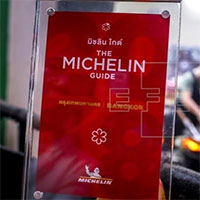Science can now confirm that your fifth-grade teacher – the one who always gives you homework – may have the eyes on the back of your neck, as the students say.
While we can’t establish any authority, a new study has shown our brain will happily process all the information our vision reflects to provide 360-degree perception. continuous.
Experiments carried out by engineers from Tohoku University in Japan recently raised the question of how much information we can push from our eyes to build a mental map of the environment. around.
It’s pretty clear that our brain’s visual hardware does an important job, overcoming limitations that the eye can only work with.

Our brain will process all the information that is reflected by sight to provide continuous 360 degree perception.
Take your eyes as an example. Evolution has been a fitting process to develop the receptor cells that make up the retinas of vertebrates, like us, the way we look back in time.
If the inside of your eyeball is a movie theater, there are cables hanging in front of you. Ask the theater for a refund.
We have excellent 3D perception that provides a detailed sense of depth, but this also comes with a wider field of view.
Add in the fact that patches of light-sensitive cells are responsible for collecting most of the information we focus on, at any given time, and you can see what we’re dealing with. reason like now.
To give us enough detail to help us move around the world, our visual system uses a number of tricks to piece it together, forming an accurate sense of our surroundings. around us.
One of its talents is to continuously crop in sharp movements known as saccades , sweeping away visual phenomena that contribute to the sense of space around us.
This ability to edit the same visual impression raises an interesting question, one that until now has had little evidence to solve – how big can the landscape around us be? ?
Remembering landmarks through the symbolic relationships of our surroundings is one way we build a picture of what we cannot see.
But that’s not what the researchers were interested in.
“Our interest is in the intuitive process, which could potentially be used to control action more directly and without conscious effort on the concept,” they write in the report. any concept”.
To study part of this process, the researchers connected six LCD screens to create a personal 360 movie theater for Tohoku University volunteer students to stand inside.
Each screen then shows a letter T and L in six random positions, each rotating into one direction making things a little more confusing.
Half of the layouts were repeated in each test, while the other half had letters mixed around.
Crucially, the volunteers didn’t know this well, so their goal was to hunt for the letter T or L on each screen in successive trials.
It was hoped that the repeated layouts would provide contextual “cueing” effects that would eventually help them find the target in less time in shifting patterns.
Variations on experiments conducted with 29 volunteers gave researchers a sample bank from which they could analyze to determine how our brains construct a model. image model of the surrounding environment.
The results show that we quickly develop a detailed idea of what’s behind us, providing a continuous 360-degree model of our surroundings.

